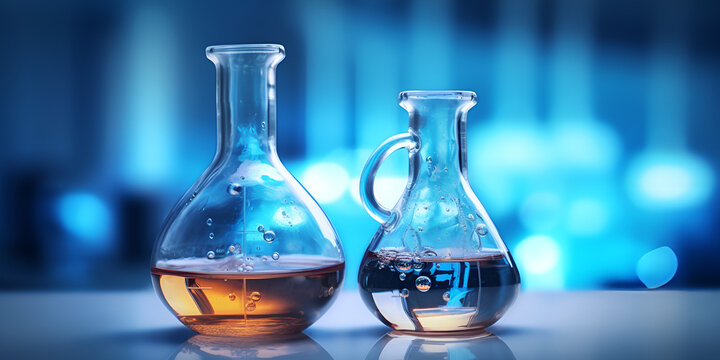Abstract
The experiment aims to prepare ethylene gas from ethylene bromide through a simple chemical reaction. Ethylene is a crucial compound used in various industrial processes, and its synthesis from ethylene bromide offers a convenient route for its production.
Introduction
Ethylene, also known as ethene, is a key building block in the chemical industry, used in the production of plastics, solvents, and various organic compounds. It can be synthesized from ethylene bromide through a dehydrohalogenation reaction. This experiment explores the preparation of ethylene gas using ethylene bromide as the starting material.
Experiment Details
Materials
- Ethylene bromide
- Sodium hydroxide (NaOH)
- Distilled water
- Apparatus for gas collection
- Heat source
Procedure
- Add a measured quantity of ethylene bromide to a flask equipped for gas collection.
- Prepare a solution of sodium hydroxide (NaOH) in distilled water and add it to the flask containing ethylene bromide.
- Heat the mixture gently while collecting the evolved gas through a delivery tube.
- Collect the gas over water to displace any remaining air and prevent contamination.
- Record the volume of gas collected at regular intervals.
Observations and Calculations
During the reaction, ethylene gas is evolved according to the following reaction:
\text{C}_2\text{H}_4\text{Br}_2 + 2\text{NaOH} \rightarrow \text{C}_2\text{H}_4 + 2\text{NaBr} + \text{H}_2\text{O}
From the volume of gas collected and the reaction stoichiometry, the yield of ethylene gas can be calculated.
Conclusion
The experiment successfully demonstrates the preparation of ethylene gas from ethylene bromide through a dehydrohalogenation reaction. The yield of ethylene can be determined based on the volume of gas collected and the reaction stoichiometry.
Precautions
- Handle ethylene bromide and sodium hydroxide with care as they are hazardous chemicals.
- Ensure proper ventilation in the laboratory to avoid exposure to fumes.
- Use appropriate safety equipment, such as goggles and gloves, when handling chemicals.
Short Questions with Answers
- What is the starting material for the preparation of ethylene in this experiment?
Answer: Ethylene bromide. - What type of reaction is involved in the preparation of ethylene from ethylene bromide?
Answer: Dehydrohalogenation reaction. - What is the role of sodium hydroxide in the experiment?
Answer: Sodium hydroxide reacts with ethylene bromide to produce ethylene gas. - Why is the gas collected over water?
Answer: To displace any remaining air and prevent contamination of the collected gas. - What safety precautions should be taken when handling ethylene bromide?
Answer: Ethylene bromide should be handled in a well-ventilated area with appropriate safety equipment. - What is the chemical formula of ethylene?
Answer: C2H4. - What is the purpose of heating the reaction mixture?
Answer: To facilitate the reaction between ethylene bromide and sodium hydroxide. - How is the volume of collected gas measured?
Answer: Using a gas collection apparatus with graduated markings. - What is the product obtained when ethylene bromide reacts with sodium hydroxide?
Answer: Ethylene gas, sodium bromide, and water. - What is the odor of ethylene gas?
Answer: Ethylene gas has a slightly sweet odor. - What is the color of ethylene bromide?
Answer: Ethylene bromide is colorless. - What type of reaction is sodium hydroxide involved in?
Answer: Sodium hydroxide undergoes a base-catalyzed reaction with ethylene bromide. - What is the significance of collecting the gas over water?
Answer: It helps in removing any impurities or residual gases. - What safety precautions should be followed when handling sodium hydroxide?
Answer: Sodium hydroxide should be handled wearing gloves and eye protection due to its caustic nature. - What is the chemical formula of sodium hydroxide?
Answer: NaOH. - What happens if the reaction mixture is heated too vigorously?
Answer: It may lead to splattering and loss of product. - What is the state of ethylene gas at room temperature?
Answer: Ethylene gas is a colorless and odorless gas at room temperature. - What happens if the reaction between ethylene bromide and sodium hydroxide is incomplete?
Answer: The yield of ethylene gas will be lower. - What is the volume of ethylene gas collected typically measured in?
Answer: Liters or milliliters. - What is the density of ethylene gas?
Answer: Ethylene gas has a density of approximately 1.178 kg/m3 at 0°C and 1 atm pressure.
Multiple Choice Questions (MCQs)
- What is the key reagent used in the reaction to produce ethylene gas?
a) Ethanol
b) Ethylene glycol
c) Ethylene bromide
d) Ethylene oxide
Answer: c) Ethylene bromide - What is the primary product obtained from the reaction between ethylene bromide and sodium hydroxide?
a) Ethylene glycol
b) Ethylene oxide
c) Ethylene gas
d) Sodium bromide
Answer: c) Ethylene gas - Which safety precaution is most important when handling sodium hydroxide in this experiment?
a) Wear goggles
b) Wear gloves
c) Wear a lab coat
d) Ensure proper ventilation
Answer: b) Wear gloves - What is the state of ethylene gas at room temperature and pressure?
a) Liquid
b) Gas
c) Solid
d) Plasma
Answer: b) Gas - What is the purpose of collecting the gas over water?
a) To increase the pressure
b) To displace any remaining air
c) To measure the volume more accurately
d) To dilute the gas
Answer: b) To displace any remaining air
🔗 Other Useful Links
- News By Amurchem
- Free Web Development Course
- All-in-One Exam Prep Portal
- Articles by Amurchem
- Grade 12 Section
- Grade 11 Section
- Grade 10 Section
- Grade 09 Section
- Advanced Artificial Course
- Home and Online Tuition
- Labs By Amurchem
- Science Lectures By Amurchem
- Social Media Executive Course
© 2025 AmurChem. All rights reserved.






